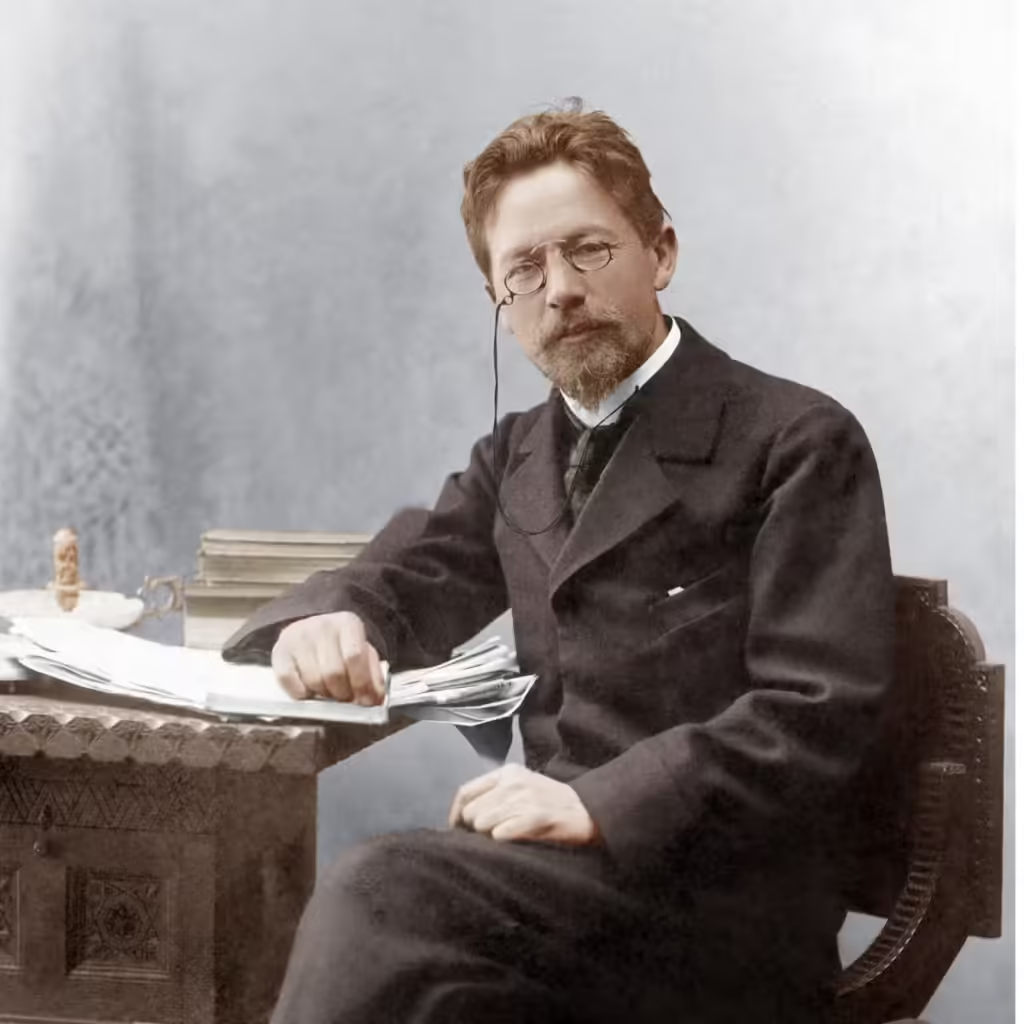
Table of Contents
Who Was Anton Chekhov?
Anton Chekhov, a renowned Russian playwright and short story writer, profoundly explored the complexities of human nature and the subtle significance of ordinary experiences in his literary works. Through his celebrated stories, such as “The Steppe” and “The Lady with the Dog,” alongside iconic plays like The Seagull and Uncle Vanya, Chekhov illuminated the delicate balance between comedy and tragedy. His life came to a close due to tuberculosis on July 15, 1904, in Badenweiler, Germany.
Youth and Education
Born on January 29, 1860, in Taganrog, Russia, Anton Pavlovich Chekhov was the son of Pavel, a grocer beset by financial difficulties, and Yevgeniya, who instilled in him a passion for storytelling. After Pavel’s business collapsed in 1875, the family relocated to Moscow in search of better opportunities, while Chekhov remained in Taganrog to complete his studies. In 1879, he joined his family in Moscow and enrolled in medical school. To support his family amidst ongoing financial hardships, Chekhov began freelancing as a writer, producing a significant volume of short comedic pieces under a pseudonym for various local publications.
Early Writing Career
In the mid-1880s, Chekhov balanced his medical practice with a burgeoning literary career, publishing serious works of fiction under his own name. His writings appeared in the newspaper New Times and were later compiled in collections such as Motley Stories (1886). One of his pivotal achievements during this period was the publication of “The Steppe,” which garnered the Pushkin Prize in 1888. This story, emblematic of his early style, reflected the influence of prominent Russian realists, including Leo Tolstoy and Fyodor Dostoyevsky.
Chekhov also ventured into theater during this time, initially composing short farces. However, he soon honed his distinctive voice, characterized by a masterful blend of comedic and tragic elements. His plays, including Ivanov (1887) and The Wood Demon (1889), depicted the struggles of educated members of the upper class as they grappled with themes of debt, illness, and existential disillusionment.
Major Works
Anton Chekhov produced many of his most significant works from the 1890s until the final years of his life. His short stories from this period, such as “Ward No. 6” and “The Lady with the Dog,” demonstrate a profound insight into human nature, illustrating how ordinary events can possess deeper meanings.
In his plays during these years, Chekhov shifted the focus primarily to mood and character development, emphasizing their importance over conventional plot structures. Although little action occurs in the lives of his often lonely and desperate characters, their inner conflicts resonate with great significance. Their narratives provide a nuanced portrayal of pre-revolutionary Russian society while simultaneously conveying themes that remain timeless.
From the late 1890s onward, Chekhov collaborated closely with Constantin Stanislavski and the Moscow Art Theatre on productions of his plays, including his masterpieces The Seagull (1895), Uncle Vanya (1897), The Three Sisters (1901), and The Cherry Orchard (1904).
Later Life and Death
In 1901, Chekhov married Olga Knipper, an actress from the Moscow Art Theatre. However, by this time, his health was deteriorating due to the tuberculosis that had afflicted him since his youth. While residing at a health resort in Badenweiler, Germany, he passed away in the early hours of July 15, 1904, at the age of 44.
Chekhov is regarded as one of the foremost literary figures of his era. His plays continue to be performed globally, and his extensive body of work has profoundly influenced a diverse array of writers across various genres, including James Joyce, Ernest Hemingway, Tennessee Williams, and Henry Miller.
